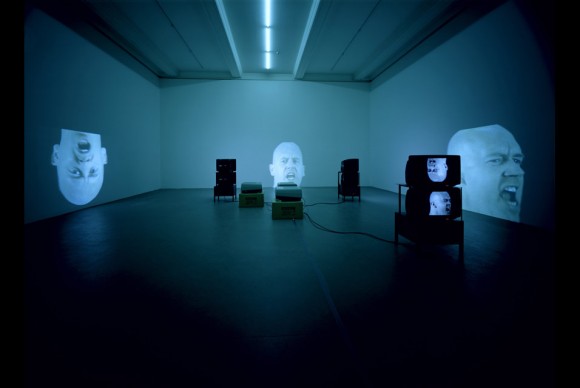Privateers of Utopia: The Art of Improving the World at Weserburg Exhibition
BREMEN.- With the exhibition “Privateers of Utopia,” the Weserburg is presenting thought-provoking impulses by artists with regard to the possibility of changing the world and society. The worldwide economic crisis has vividly demonstrated how dangerous it is when politics places the structuring of society in the hands of the economy. But what is the role of art in this context? What possibilities does it have for exercising an influence? “Art doesn’t liberate us from anything”—Bruce Nauman’s sober assessment focuses in a special manner on the seeming impotence of art vis-à-vis the supposedly more powerful forces of politics and the economy. On the other hand, Carsten Ahrens, the director of the Weserburg, formulates the thematic core of the exhibition differently: “It is the arts—the visual arts, theater, literature, film, dance and music—which keep awake as a living dream the vision of another world.”
Under the title “Privateers of Utopia,” the Weserburg has brought together in an extensive exhibition artistic positions which give expression to this dream of changing the world.
In an extensive collage in text and image, the exhibition traces out the longing for utopian designs of another world. The artistic media extend from pictures, sculptures and installations past photographs and film all the way to texts, books and interviews. They are all mutually interwoven in the form of an overall staging. The irony to be heard in the subheading indicates that “the art of improving the world” has no answer but simply describes an avenue of question marks. Upon this avenue, the visitor will be in his own realm but, in awareness of a statement by Andy Warhol, will be able to discover his own energies and possibilities: “People always say that time changes the world, but the truth is that you have to change it yourself.”
Proceeding from diverse ideas and attitudes, the artists of this exhibition aim at a common focus. This is involved with the aesthetic mission of unhinging the existing system of economy, technology and state, and of actualizing the belief in the possibility of altering the world. Theodor W. Adorno offers a succinct summation: “The utopia of this sort of aesthetic mission is the prototype of a real condition in the future, and precisely because today the real condition disallows all reconciliation, its idea must be maintained in the image.”
The participating artists are border crossers between systems. Beyond ideology and political correctness, they erase the foundations of reality with their works and thereby open up the space, the possibility of conceiving of another world. At the center stand both the question of Beuys as to “how art can give rise to revolution” and the recognition that “the only thing that a work of art can do is to awaken the longing for another condition of the world. And this longing is revolutionary” (Heiner Müller).
With his concept of the “social sculpture,” Joseph Beuys made the possibility of changing the world the very core of his artistic work. His thoughts on a redesigning of the world revolve around a redefinition of the terms of production, according to which “art = capital” and “every person is an artist.” Heiner Müller—coming from an entirely different direction—sharpened the realization with his early plays from the production of the GDR, citing the social conflicts along the path “barefoot into socialism,” and he forced a revolutionization of the production process. In the reproduced motifs from the world of consumer goods, it was Andy Warhol who reflected the images of desire animating the American Way of Life in the abyss of their emptiness.
Artists as privateers of utopia are quite conscious of their status in the power structure. Beuys asserts: “Up to now the artist has not proven that he has more power than the economy.” And this thought is pursued more deeply by Heiner Müller: “As an intellectual, one has to accept that in a world where money has the highest status, the intellectual doesn’t mean much and can’t do much except for thinking and writing.”
This basic tone in the tidal flows of failing hope and hopeful failure is indicated in the first work of the exhibition, Bruce Nauman’s video installation “Anthro/Socio. Rinde Spinning” (1992), and it extends through the entire show, revolving around a quotation from Samuel Beckett: “Try again. Fail again. Fail better.”
Related posts:
- Exhibition of Works by Multi-Talented Artist Robert Rehfeldt on View at Weserburg Museum
- Work by Gerhard Richter from the Weserburg Museum to Be Offered
- Work by Gerhard Richter from the Weserburg Museum to Be Offered
- Dusseldorf’s Quadriennale 2010 Opens with Joseph Beuys Exhibition
- Dusseldorf’s Quadriennale 2010 to Present Exhibition by Joseph Beuys

